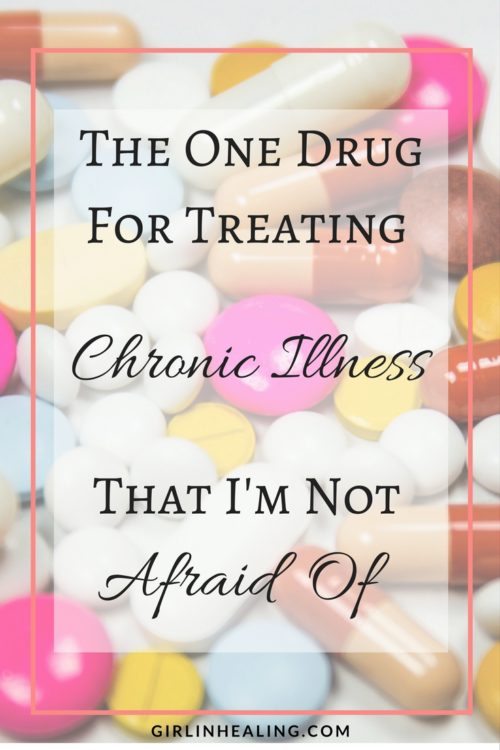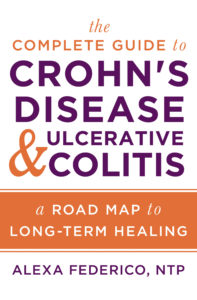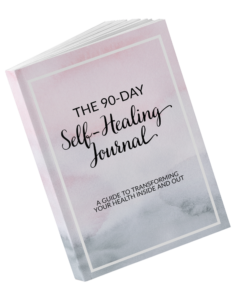I have taken pride in that I have been medication-free for some time. My diligence to eating what works with my body has been (mainly) enough to live a happy and healthy life. Until those days when it’s just…not.
I have always refused started any of the medications pushed upon me for my Crohn’s disease, until I learned about Low-Dose Naltrexone.
Crohn’s Medications: A Tough Decision
But first, let’s talk about medications for Crohn’s Disease. Talk about one extreme to the other.
I think of the options as 1.) Useless or 2.) Frightening. Several years ago, I was taking Asacol and before that I took Pentasa. Neither had any effect on me. Maybe my disease was too advanced for the lower-level drugs.
Asacol and Pentasa are in the “Useless” category. In the “Frightening” category is basically the rest of what’s out there. And they are all pretty similar. Let’s take a look at what I mean, shall we?
“Lymphoma, including a fatal kind called hepatosplenic T-cell lymphoma, and other cancers have been reported in children and adults taking REMICADE®… Other serious side effects reported include skin cancer, hepatitis B, liver injury, blood problems, allergic reactions, nervous system problems, or lupus-like syndrome.” – Remicade (infliximab)
While I am aware that these side effects are rare, they are stated because they have happened. And yes, that form of lymphoma has mainly occurred in young adult males. But who’s to say what damage it will do to my body? I fear that these drug companies do not know their product as well as they make it seem, and that is why I have resisted taking them for 10 years.
“Some people have developed a rare type of cancer called hepatosplenic T-cell lymphoma. This type of cancer often results in death. If using TNF blockers including HUMIRA, your chance of getting two types of skin cancer (basal cell and squamous cell) may increase.” -Humira (adalimumab)
Despite these disastrous possibilities, I have considered the drugs above with great thought. I know that I want a good quality of life for myself. I cannot and will not be severely ill every November-May as I have experience during the last 10 years of my life. But, if I were to be that rare case to develop fatal cancer from a drug, I could not deal with the regret of “Why didn’t I just deal with it?” Some people see fantastic results with these drugs. And if you need it, I am all for it! But I would like to put that off as long as I can.
Discovering LDN
But, wait!
It’s not all dark and stormy. There are some rainbows and butterflies to be found. Because of this blog and social media, I was introduced to LDN, or Low-Dose Naltrexone by a fellow Instagrammer who was kind enough to comment on one of my posts and suggest I check out LDN, because she was having a positive experience with it.
LDN was originally created as a drug to treat opioid addictions by blocking the effects of opiate drugs when taken. When given for this purpose, dosages were 50-100 mg. When used to treat other conditions, dosages generally range from 0.5-4.5 mg.
And lucky for us with Crohn’s, “The condition with the most scientific support for LDN efficacy is Crohn’s disease (CD) … LDN has been reported to reduce not only self-reported pain in that condition but also objective markers of inflammation and disease severity (including the severity scores from endoscopic evaluation) [7, 12, 36]. The response rate of LDN in Crohn’s disease may be even higher than that seen in fibromyalgia, with over 80 % of the study participants exhibiting significant improvement [7, 12]. – NCBI
FINALLY, a drug where Crohn’s Disease can be improved with a drug. Even the most intense drugs stated above do not have as impressive remission rates. There are no serious side effects. Only sleeplessness, vivid dreams, mild headaches and some other minor side effects have been reported, but are generally dissipated with a lower dose.
How Does It Work?
This interview with Chris Kresser is an extraordinary explanation of LDN in simple to understand language. Read or listen!
According to Chris, LDN:
- Promotes T Regulatory Cell function (turn inflammation on/off, prevents immune systems to becoming overactive, hence autoimmune diseases)
- Reduces inflammation in the Central Nervous System
- $35-40 a month, not covered by insurance
- Is off-patent, meaning drug companies will not make a lot of money off of it, which explains why there are not an abundance of studies (but they are out there!)
Who Can Take It?
I joined two Facebook groups to learn more about LDN and engage with people who use it. What I found out was pleasantly surprising!
People are taking LDN for all kinds of chronic conditions. Not only Crohn’s but:
MS, Lyme, and Hashimoto’s are some of the most common, but The LDN Research Trust has compiled this huge list!
Do you know anyone on LDN?
What are your experiences? Will you consider it? Let me know!







OMG – I found you via a post in the BGB community group and I am so glad I did! I am a Crohn’s girl, too! I was diagnosed with UC at age 9 then Crohn’s at age 15. Just some words of encouragement: stay encouraged and stay well. It WILL get better. I was on Asacol (and Prednisone many years ago) and I haven’t been on any medication for my Crohn’s in a while, so I know it is possible so hang in there!
I am so glad we got connected! Thank you for those words of encouragement 🙂 It’s wonderful and inspiring to hear that you haven’t needed medications in a while. Keep up the good work!